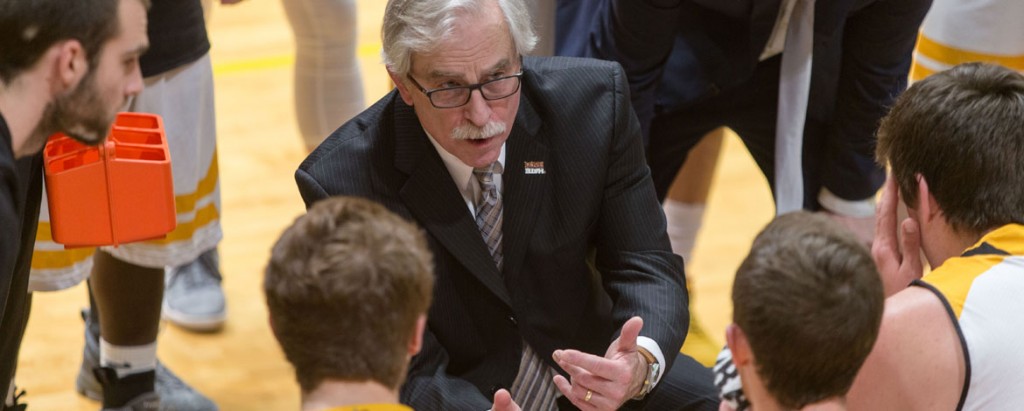Page 12 • (12,266 results in 0.055 seconds)
-

Have you ever wondered how the ocean’s tiniest inhabitants play a significant role in shaping our world? Marine microorganisms, minuscule life forms, wield a vital influence over our planet’s climate. They manage crucial components like carbon and oxygen within the vast oceans and the atmosphere.…
Lydia Flaspohler ’25 and Ryan Fisher ’24 dive into the secrets of marine microorganisms Posted by: mhines / September 28, 2023 Image: Student researchers spent the summer analyzing marine microorganisms and samples collected in the Puget Sound with assistant professor of chemistry Angie Boysen. (PLU Photo / Sy Bean) September 28, 2023 By MacKenzie HinesPLU Marketing and Communications Have you ever wondered how the ocean’s tiniest inhabitants play a significant role in shaping our world? Marine
-

Food Symposium addresses the many ways food impacts the world. The ethics of food By Katie Scaff ’13 The PLU Philosophy Department’s Food Symposium Feb. 21 will address the ethics revolving around food. Keynote speaker, Paul B. Thompson – the W.K. Kellogg Chair in Agricultural,…
February 21, 2012 Food Symposium addresses the many ways food impacts the world. The ethics of food By Katie Scaff ’13 The PLU Philosophy Department’s Food Symposium Feb. 21 will address the ethics revolving around food. Keynote speaker, Paul B. Thompson – the W.K. Kellogg Chair in Agricultural, Food and Community Ethics will speak at 7 p.m., Feb. 21 in the UC Regency Room. Thompson, who has published several works on the environmental and social significance of agriculture, will discuss three
-
Originally Published in 2014 When I was a graduate student at the University of Iowa, the classicist and writer Anne Carson came to campus to give a reading and a colloquium. During the colloquium, she was asked how she navigated among the wild variety of…
say all of art— is only ever about a poet’s feelings. But anyone who has ever taken a poetry-writing course knows that the making of a work of art may begin with the artist’s feelings, but to be any good it has to be brought into the realm of craft. In the poetry-writing classes I teach, I like to imagine the members of the class wearing lab coats —which is to say that the analytical work involved when we discuss each other’s poems is vital to a thorough understanding of how those poems work. As
-

High school choir and guitar teacher Alonso Brizuela ’14 was in Spokane at a national choral directors conference in mid-March of 2020. Just a day and half days into events, the conference shut down early—due to a mysterious new illness that had arrived in the…
complete and utter pivot for everyone.” Summer brought time to breathe for all three teachers. Brizuela and Lord prepared for fall classrooms with virtual options, while Zwang entered a Montessori teacher-training program. Sarah Lord's children doing school work on the kitchen table. School Year 2020-2021: New Approaches By the fall of 2020, Brizuela felt more comfortable teaching music in a virtual classroom and encouraging students in conversation and interactions. Although students often turned off
-
Some students who meet the residency requirement choose to live off campus during their time at PLU. Living off campus can provide students with an even greater degree of independence as well as a
Off Campus LivingSome students who meet the residency requirement choose to live off campus during their time at PLU. Living off campus can provide students with an even greater degree of independence as well as a chance to learn many practical life skills. If you meet the residency requirement, you may elect to live off campus. PLU, as a service to its students, maintains a list of available options in the area by working with Places4Students. PLU does not endorse or represent any of
-

TACOMA, WASH. (Feb. 24, 2017)- Emotions ran high for senior Brandon Lester in his final basketball game at Pacific Lutheran University. Lester and his teammates fought hard through a lingering double-digit deficit against Linfield College. The Lutes never took the lead that night, and eventually…
Coach Dickerson retires after 14 years of support on, off the court Posted by: Kari Plog / February 24, 2017 Image: Steve Dickerson, head coach for men’s basketball, retires in May after 14 years at PLU. (Photo by John Froschauer/PLU) February 24, 2017 By Kari Plog '11PLU Marketing & CommunicationsTACOMA, WASH. (Feb. 24, 2017)- Emotions ran high for senior Brandon Lester in his final basketball game at Pacific Lutheran University.Lester and his teammates fought hard through a lingering double
-
acetaminophen (Tylenol) aspirin (Bayer) ibuprofen (Advil) naproxen sodium (Aleve)
box/bottle for dosage instructions, side effects, and contraindications.Choosing the Right Over-The-Counter Medication for Your Symptoms. (2015, April 9). Retrieved October 19, 2015, from health.iupui.eduLOCATION601 121st St S Parkland, WA 98444HOURSMonday – Friday, 8am to 5pmEMERGENCY911 (off campus)
-
and we know you want and need the ease of grabbing a quick meal. Dining Dollars are a great choice! All food items you purchase with Dining Dollars are sales tax-exempt and you can add as many Dining
Market with cash or credit card with no fee. Purchase through the GET app https://get.cbord.com/plu/full/prelogin.php for a fee of $2.75 per purchase. Save TimeDon't waste your precious time going off campus for foodStay on campus and grab a quick bite during the day using Dining Dollars— which are exempt from state sales tax! Add Dining DollarsYou may purchase additional Dining Dollars any time throughout the year up to April 30th Purchase Dining Dollars online and charge them to your student
-
Find an internship. Find an internship or job directly related to the field of study and receive a letter (or email offer) from the prospective employer indicating the job title, dates of
Curricular Practical Training (CPT)International Students can participate in training that is directly related to their majors using CPT authorization. CPT authorization must be approved by International Student Services. This opportunity is available for current F-1 students only. Most students use CPT to engage in positions that are paid and located off-campus.Am I Eligible? – all of the following criteria must be met: I have been lawfully enrolled on a full-time basis for one academic year
-

TACOMA, WASH. (Aug. 15, 2018) — Hannah Park ’20, an English major at Pacific Lutheran University, is used to translating. The youngest of her siblings, Park says she naturally fell into the role once she was the only one home with her Korean mother, who…
STARTALK program prepares Lutes and other educators across the state to teach Korean, Chinese Posted by: Kari Plog / August 15, 2018 Image: A STARTALK teacher runs through a Chinese-language lesson plan. (Photo by John Froschauer/PLU) August 15, 2018 By Kari Plog '11PLU Marketing & CommunicationsTACOMA, WASH. (Aug. 15, 2018) — Hannah Park ’20, an English major at Pacific Lutheran University, is used to translating. The youngest of her siblings, Park says she naturally fell into the role once
Do you have any feedback for us? If so, feel free to use our Feedback Form.


